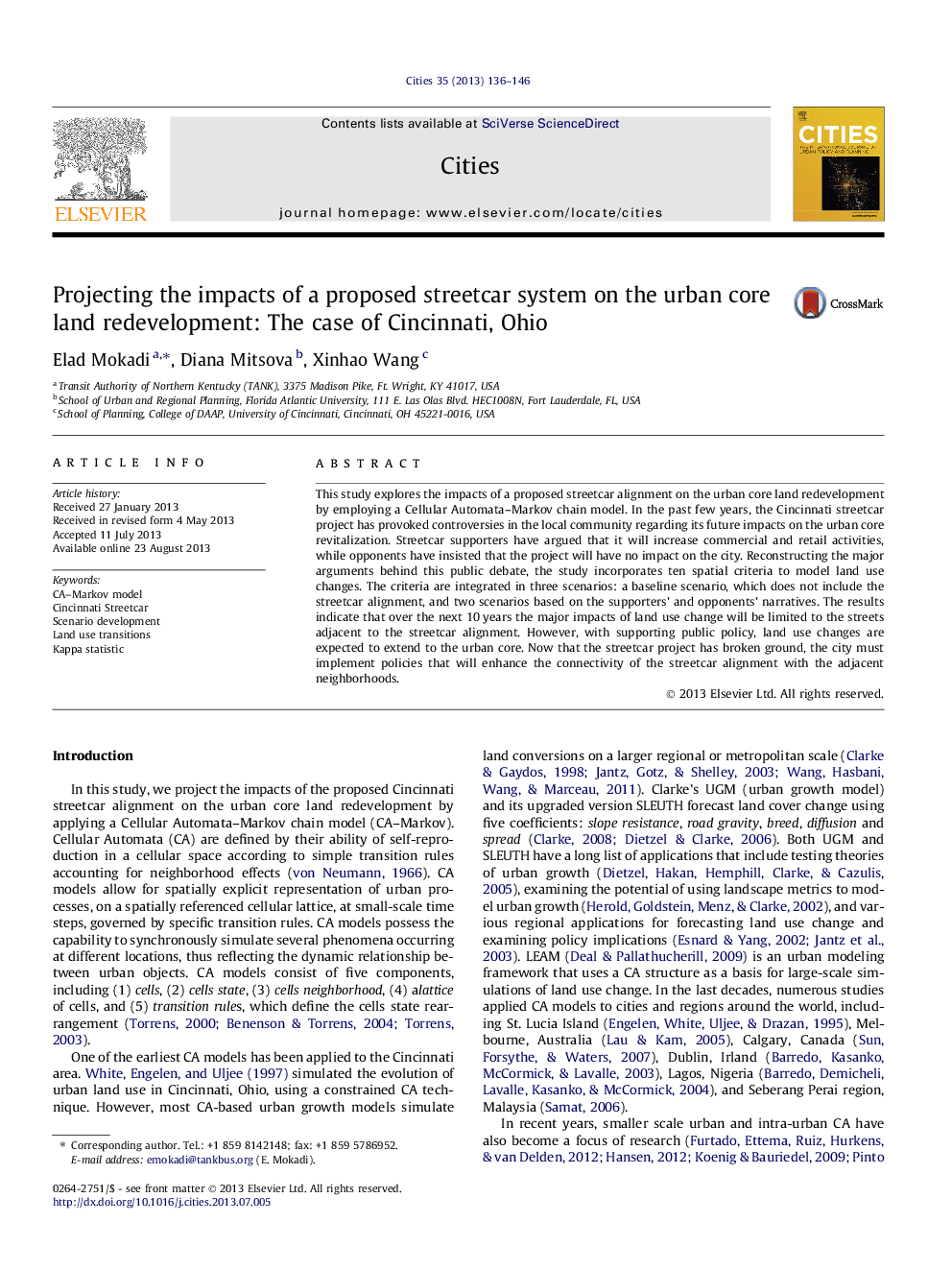| Article ID | Journal | Published Year | Pages | File Type |
|---|---|---|---|---|
| 1008445 | Cities | 2013 | 11 Pages |
•We applied CA–Markov model to explore future urban redevelopment in Cincinnati, Ohio.•The model focuses on the potential impact of a proposed streetcar system on its vicinities.•The streetcar project triggered a poignant public debate in the local community.•Land use changes are modeled under three scenarios, derived from opposing public narratives.•It was found that the streetcar will increase commercial development in the adjacent streets.
This study explores the impacts of a proposed streetcar alignment on the urban core land redevelopment by employing a Cellular Automata–Markov chain model. In the past few years, the Cincinnati streetcar project has provoked controversies in the local community regarding its future impacts on the urban core revitalization. Streetcar supporters have argued that it will increase commercial and retail activities, while opponents have insisted that the project will have no impact on the city. Reconstructing the major arguments behind this public debate, the study incorporates ten spatial criteria to model land use changes. The criteria are integrated in three scenarios: a baseline scenario, which does not include the streetcar alignment, and two scenarios based on the supporters’ and opponents’ narratives. The results indicate that over the next 10 years the major impacts of land use change will be limited to the streets adjacent to the streetcar alignment. However, with supporting public policy, land use changes are expected to extend to the urban core. Now that the streetcar project has broken ground, the city must implement policies that will enhance the connectivity of the streetcar alignment with the adjacent neighborhoods.
